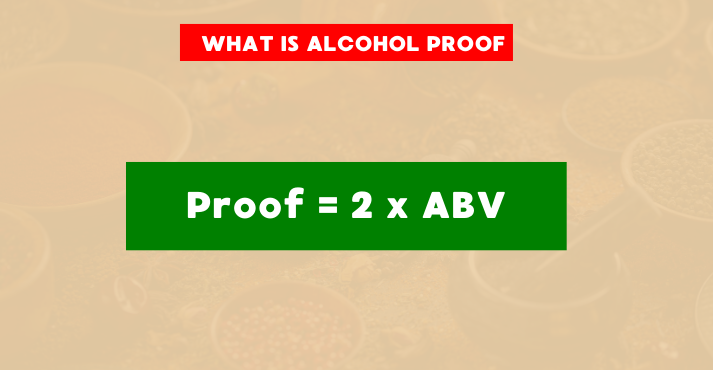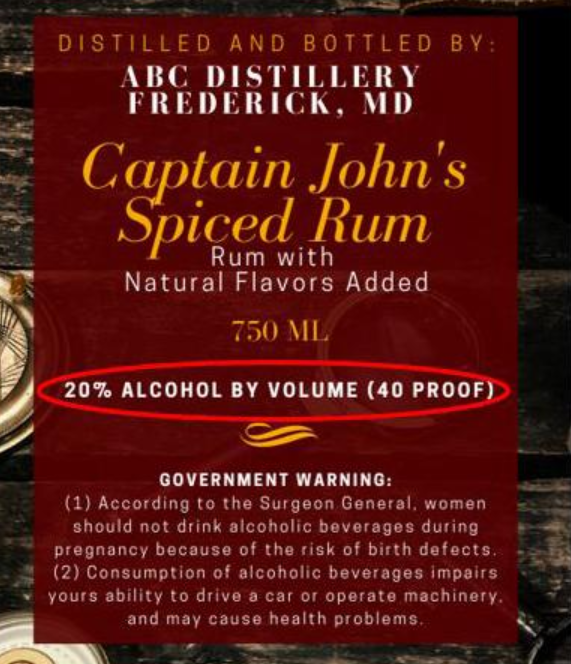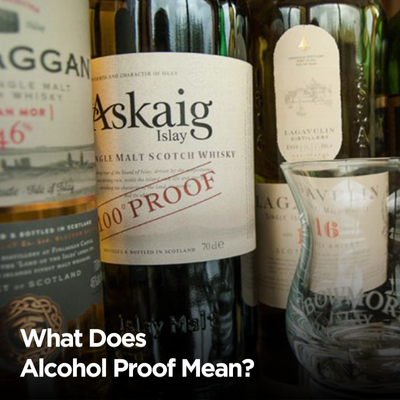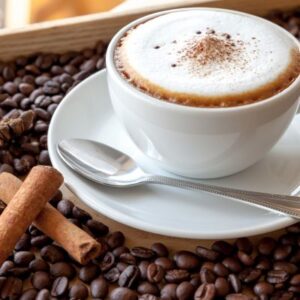If you’ve ever picked up a bottle of vodka or whiskey, you’ve likely noticed two numbers on the label: “Alcohol by Volume” (ABV) and “Proof” in alcohol. While ABV is straightforward and tells you the alcohol percentage in the liquid, proof might be confusing.
Knowing your drink is very important for your health. According to the National Center for Drug Abuse Statistics (NCDAS), alcohol abuse kills around 3 million people every year, which accounts for up to 6% of global deaths.
The continuously expanding food and beverage (F&B) industry requires government intervention to create regulations that protect the rights of consumers. The concept of proof dates back to 16th-century England, when the government introduced a special tax on stronger spirits.
To determine which liquors qualified for this tax, they used a simple test:
If gunpowder soaked in the alcohol could still ignite, the spirit was marked for “proof” in alcohol. If it didn’t, it was too weak.
This system evolved with time. Nowadays, proof is simply twice the amount of ABV if we talk about proof vs ABV.
But what does alcohol proof mean, and why does it still matter? From understanding a spirit’s strength to knowing how it affects taste and mixology, alcohol proof remains a critical measurement in the liquor industry to maintain health-concerned regulations and control. Let’s discover what “proof” in alcohol signifies.
What is Alcohol Proof?

Alcohol proof is a measurement of the alcohol content in a beverage. It is primarily used for distilled spirits and is expressed mathematically as twice the Alcohol by Volume (ABV).
ABV is the most commonly used metric and represents the alcohol percentage in a liquid. For example, a spirit with 40% ABV contains 40% pure alcohol and 60% water and other components. When converted to proof, this would be quantified as 80.
While the proof system originated centuries ago to determine alcohol strength for taxation, it remains in use today, especially in the US.
*Many countries still rely only on ABV to measure alcohol content.
How Alcohol Proof is Calculated?
To calculate Proof in alcohol from the ABV value, let’s see what alcohol proof means mathematically.
As quantitative alcohol proof meaning signifies twice the ABV, the calculation of alcohol proof is straightforward and mathematically represented as:
Proof = 2 x ABV
Examples of Alcohol Proof in Spirits
Let’s see the examples below to see what proof vodka and other alcoholic beverages are based on their ABV value.
Vodka (40% ABV) → 80 proof
Whiskey (45% ABV) → 90 proof
Overproof Rum (75.5% ABV) → 151 proof
With these values, you can categorize low vs high-proof alcohol. The higher the proof, the stronger the alcohol content. High-proof spirits are often used in cocktails but also require responsible handling due to their potency.
Variations in Proof Systems
Different countries and regions have used different systems to signify “proof” in alcohol over time:
United States: Proof is twice the ABV (40% ABV = 80 proof).
United Kingdom: Proof was based on the flammability of the spirit, with 100 proof roughly equal to 57.1% ABV.
*This system is no longer in use.
France and other European countries: They use ABV only instead of proof.
*While the proof system is still recognized in the US, ABV has become the standard measurement used worldwide for labeling alcoholic beverages.
Why Alcohol Proof Matters
Do you know? Higher-proof drinks have a more significant effect on your blood alcohol concentration.
Alcohol proof meaning is concluded based on several other factors apart from the alcoholic content of the beverage. Let’s see what does alcohol proof mean in different aspects:
1. Impact on Alcohol Strength and Taste
Low vs high-proof alcohol directly influences the strength and taste of a spirit. Higher-proof spirits contain more ethanol, producing a more intense flavor profile and a more substantial warming or burning sensation when consumed.
Higher Proof Alcohal (Above 80 Proof / 40% ABV):
The higher ethanol concentration enhances the extraction of compounds from barrels during aging (for whiskey, rum, brandy). This results in complex flavor profiles with more pronounced wood, spice, and smoky notes.
Ethanol is a dual carbon chain organic compound of the alcohol family. Higher alcohol proof means ethanol evaporates quickly, intensifying the “burn” or warming sensation in the mouth and throat.
*Spirits above 100 proof are often diluted before drinking to reduce harshness.
High-proof alcohol like overproof rum (151 proof) is used in mixed drinks where dilution is expected. They help maintain balance in cocktails without losing alcohol content.
Lower Proof Spirits (Below 80 Proof / 40% ABV):
In lower-proof alcohol, the low ethanol levels reduce the burning sensation, making subtle flavors more noticeable. This is common in liqueurs, flavoured spirits, and lightly aged liquors.
Many premium whiskeys and tequilas are bottled at 80 proof (40% ABV) to balance alcohol strength and flavour complexity.
These spirits are preferred in social settings where drinking over an extended period is common, such as wine-based cocktails or low-alcohol aperitifs.
2. Legal and Labeling Regulations
The way you interpret ABV and what does alcohol proof mean for you is influenced by the region and its regulatory roadmaps. Governments regulate alcohol proof to ensure consumer safety, standardization, and fair taxation. In most countries, laws require manufacturers to display the Alcohol by Volume (ABV) percentage on labels, while proof is optional.
In the US:
The Alcohol and Tobacco Tax and Trade Bureau (TTB) oversees alcohol labeling.
- Spirits must list their ABV (Mandatory)
- Proof is represented as a degree of proof (optional)
It helps determine taxation brackets, as higher-proof spirits are taxed more due to increased alcohol content.
*It is regulated that fluctuations in proof during production must remain within a small tolerance range to comply with federal regulations.
EU and Other Countries:
The European Union (EU) mandates ABV labeling but does not use proof.
As discussed above, the UK historically used a different proof system (57.1% ABV = 100 proof) but now follows ABV labeling standards.
Canada, Australia, and Asia rely solely on ABV for legal compliance.
Labeling accuracy is crucial for consumer awareness, helping buyers make informed decisions about alcohol strength, consumption limits, and drink mixing.
*For ABV eauivalency, simply divide the Proof by 2 to get its relevant ABV labeling.
3. Role in Cocktails and Mixology
Alcohol proof significantly influences how a spirit is experienced in cocktails. High-proof spirits are essential in mixology for their ability to add intensity and balance flavours when combined with other ingredients.
This is how high-proof alcohol affects cocktails:
- Higher-proof spirits extract more flavour from infused ingredients, making them essential in bitters, tinctures, and barrel-aged cocktails.
- Many cocktails include ice or mixers that dilute the drink. High-proof spirits ensure the drink maintains its intended strength and character even when diluted.
- Some high-proof spirits, such as overproof rum (151 proof), are used for flaming cocktails, enhancing presentation, and adding a slight caramelisation effect.
High-Proof Spirits in Mixology:
- Absinthe (120–140 proof / 60–70% ABV) – Used in classic cocktails like the Sazerac and Corpse Reviver No. 2.
- Overproof Rum (151 proof / 75.5% ABV) – This is common in tiki drinks like the Zombie and Jet Pilot.
- High-Proof Whiskey (100+ proof) – The higher alcohol proof means cocktails like the Old Fashioned and Manhattan, where dilution is expected.
- Everclear (190 proof / 95% ABV) – A neutral grain spirit used sparingly in infusions and punch recipes due to its extreme strength.
Standard Alcohol Proof Levels for Popular Drinks
The table below gives you an idea of regulated ABV and proof labels for alcoholic drinks.
[fusion_table fusion_table_type=”1″ fusion_table_rows=”” fusion_table_columns=”” margin_top=”” margin_right=”” margin_bottom=”” margin_left=”” hide_on_mobile=”small-visibility,medium-visibility,large-visibility” class=”” id=”” animation_type=”” animation_direction=”left” animation_speed=”0.3″ animation_offset=””]
| Spirit | Typical ABV Range | Typical Proof Range |
|---|---|---|
| Brandy | 35–60% | 70–120% |
| Gin | 40–55% | 80–110% |
| Rum | 20-40% | 40-80% |
| Tequila | 40–55% | 80–110% |
| Vodka | 40–90% | 80–180% |
| Whiskey | 40–50% | 80–100% |
[/fusion_table]
Key Differences Between Alcohol Proof and ABV
Alcohol proof is an older method of measuring the strength of distilled spirits (primarily used in the U.S). It is simply calculated by doubling the ABV percentage. For example, a Rum with 20% ABV is labeled:
20% Alcohol by Volume (40 proof)

See the table below for key differences:
[fusion_table fusion_table_type=”1″ fusion_table_rows=”” fusion_table_columns=”” margin_top=”” margin_right=”” margin_bottom=”” margin_left=”” hide_on_mobile=”small-visibility,medium-visibility,large-visibility” class=”” id=”” animation_type=”” animation_direction=”left” animation_speed=”0.3″ animation_offset=””]
| Factor | Alcohol Proof | Alcohol by Volume (ABV) |
|---|---|---|
| Definition | A measure of alcohol strength, traditionally used for spirits. | The percentage of pure ethanol in a beverage. |
| Calculation | Proof = 2 × ABV | Measured directly as a percentage of alcoholic content minus water. |
| Usage | Primarily used in the United States. | Standard measurement worldwide.Labeling |
| Requirement | Optional in the US (not required in most countries). | Mandatory on alcoholic beverages in most countries. |
| Precision | Less precise as it relies on a simple doubling of ABV. | More directed as it directly reflects ethanol content. |
| Common in | Spirits such as whiskey, rum, and vodka. | All alcoholic beverages, including beer, wine, and spirits. |
[/fusion_table]
ABV is used to calculate “proof” in alcohol. In contrast, ABV is a direct measurement of the ethanol content in a beverage – a more precise way to determine alcohol strength.
Why is ABV the Standard for Alcohol Labeling?
ABV is the preferred metric worldwide because it provides a clear, scientific representation of alcohol content. Regulatory bodies, including the EU, the Alcohol and Tobacco Tax and Trade Bureau (TTB) in the US, and the Food and Drug Administration (FDA), mandate ABV labeling to ensure transparency and consumer awareness.
Conclusion
Now you understand what does alcohol proof mean and how you can interpret it to identify the alcoholic content of the drink. If the Proof is not mentioned on your drink, you can check ABV to determine the alcohol percentage in your drink.
Unlike proof, which varies by country and historical context, ABV offers a standardized approach that applies universally to alcoholic beverages.
Interested in knowing more tips and tricks related to food and beverage service equipment and industry? Look no further than FHA HORECA.












